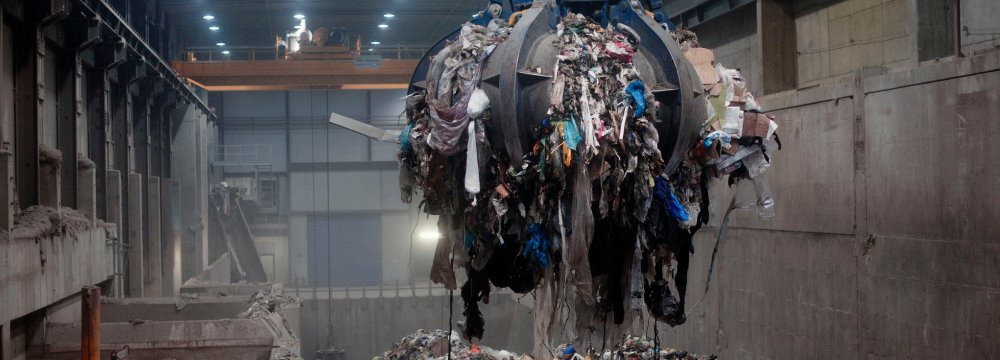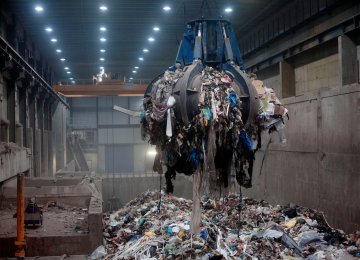Iran has signed an agreement with the Czech firm to construct a 20 megawatt waste-to-energy (WtE) plant in the northern Gilan Province, Houshang Falahatian, a deputy energy minister said on Monday.
The deal, based on a build-operate-transfer contract, was concluded between the Renewable Energy Organization of Iran, known as SUNA, and an unnamed Czech company in the presence of Milan Sarapatka, member of Czech Parliament's energy committee in Tehran, Mehr News Agency reported.
According to Falahatian, the plant will be capable of incinerating 350 tons of municipal waste and converting it into 20 MW of electricity per day.
Waste-to-energy plants, also known as incineration plants, are dedicated to the thermal treatment of wastes with or without recovery of the combustion heat generated. The heat from the combustion process is used to generate superheated steam in boilers. The steam is in turn used to drive turbo-generators to produce electricity.
The official said investment in the project will yield in 14 years through guaranteed purchase of electricity from the power plant by Gilan's provincial electricity company.
Pointing to his recent trip to Prague to inspect WtE plants, Falahatian said the factories were equipped with modern technology that is why the Energy Ministry decided to collaborate with the Czech companies.
"A new generation of power stations will be constructed on the Caspian coast, where the accumulation of waste is high, to produce electricity," he said, noting that the government plans to expand the number of WtE plants across the country.
Investments are mostly expected to be made by private and foreign investors.
--- Untapped Capacity
Highlighting the untapped renewable energy market in Iran, Falahatian said plans call for producing 5,000 MW of electricity from renewable sources over the next five years, part of which will come from the incineration plants.
Referring to Mazandaran Province adjacent to Gilan, with a population of more than 3 million, Falahatian said WtE plants have already been built in Sari, Nowshahr and Tonekabon each with an output capacity of 3 MW.
Most garbage in Iran is traditionally buried in landfills. But against a backdrop of growing population and an economy poised to take off after international sanctions were eased a year ago, the country will need to deal with a rising mountain of waste.
According to Javad Nasiri, director of biomass department at SUNA, Iran has the capacity to generate more than 10,000 MW of electricity from organic matters, known as biomass, with 25 cities capable of producing at least 400 MW from waste material.
According to reports, close to 20 million tons of waste is produced every year in Iran on average, but 100 tons is enough to run a 2 MW power plant every day.
"An incineration plant with 1 MW capacity can reduce carbon dioxide emission by 50,000 tons per year, whereas a wind plant with the same capacity can reduce CO2 emissions by 5,000 tons," Nasiri said.











Add new comment
Read our comment policy before posting your viewpoints